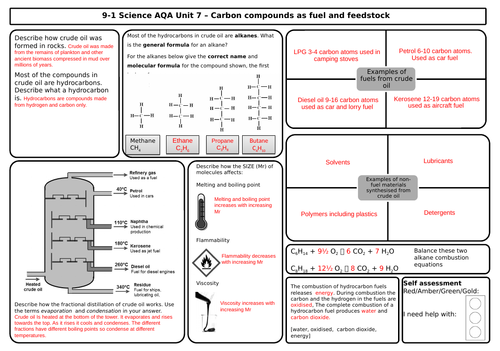







AQA GCSE Combined Science Chemistry - **FOUNDATION TIER **
These simple revision mats can be printed A3 with a single sheet forming a revision activity for an entire topic. Include a mixture of cloze word fact sections with recall and exam style questions. Now with free suggested answer sheets to support non-specialists or parents/students revising. Provided as Powerpoint and PDF.
These 7 printable A3 mats cover the following content
Unit 7 - Organic Chemistry (3 mats)
- Carbon compounds as fuels and feedstock
- Fractional distillation and petrochemicals
- Properties of hydrocarbons
- Cracking and alkenes
Unit 8 - Chemical analysis (4 mats)
- Pure substances
- Formulations
- Chromatography
- Identification of common gases
Something went wrong, please try again later.
This resource hasn't been reviewed yet
To ensure quality for our reviews, only customers who have purchased this resource can review it
Report this resourceto let us know if it violates our terms and conditions.
Our customer service team will review your report and will be in touch.
